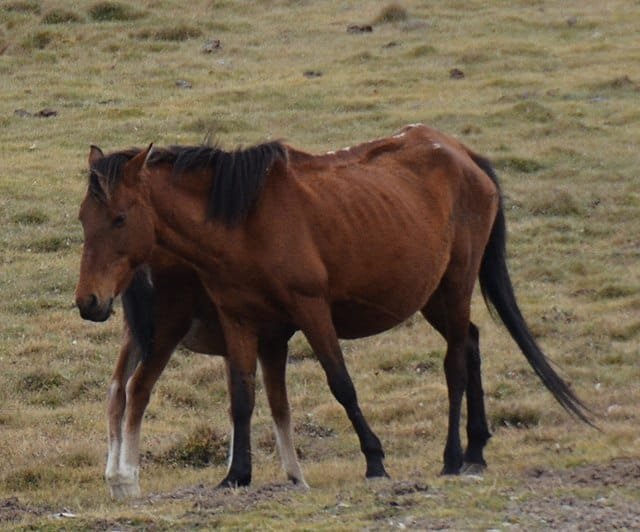Bale Horse A Majestic and Versatile Breed
The Bale horse is a remarkable and noble breed known for its beauty, agility, and versatility. Native to the Bale region in Ethiopia, this breed has a rich history that spans centuries. Known for its unique qualities, the Bale horse has played an essential role in the lives of the people of Ethiopia, serving as a companion in daily life, agriculture, and even in warfare.
Origins and History
The history of the Bale horse is deeply connected to the mountainous and rugged terrain of the Bale region in southern Ethiopia. These horses are believed to have originated in the highlands of Ethiopia, where they have adapted to the harsh environment over thousands of years. The breed’s development is shaped by the region’s diverse geography, including its steep slopes, high altitudes, and cool climate.
Bale horses were first domesticated by local tribes, and they quickly became an integral part of daily life. They were used for transportation, farming, and, in some cases, military purposes. Throughout Ethiopian history, the Bale horse has remained a symbol of strength, endurance, and resilience.
Physical Characteristics
The Bale horse is medium-sized, typically standing between 14 and 15 hands (56–60 inches, or 142–152 cm) at the shoulder. It has a compact yet muscular build, designed to handle the rugged and steep landscapes of the Bale Mountains. The breed’s body is proportionate, with a strong back, broad chest, and powerful hindquarters that allow it to carry heavy loads and move swiftly over challenging terrains.
One of the most striking features of the Bale horse is its sleek coat, which is typically dark brown, chestnut, or black. Its coat is dense and provides protection against the chilly weather of the highlands. The Bale horse also has a long, flowing mane and tail, which add to its majestic appearance.
The breed is known for its sturdy hooves, which are well-suited for navigating rocky paths and uneven surfaces. This ability to move effortlessly across rough terrain is one of the reasons the Bale horse has been highly valued in Ethiopia for centuries.
Temperament
The Bale horse is known for its calm and gentle temperament. Despite its strength and endurance, it is typically a very patient and cooperative horse, which makes it easy to handle and train. The breed is highly intelligent and responsive, allowing it to form strong bonds with its owners. This loyalty makes the Bale horse a reliable partner for riders, whether used for transportation, work, or sport.
Although the Bale horse is gentle by nature, it is also spirited and can display bursts of energy when needed. This versatility makes the Bale horse suitable for a variety of tasks, from casual riding to more demanding activities such as farm work or even racing.
Role in Ethiopian Culture
In Ethiopia, the Bale horse holds significant cultural importance. These horses have been used for transportation, especially in regions where vehicles cannot easily access. The Bale horse’s ability to navigate rough, mountainous terrain has made it indispensable for local farmers and traders who rely on these horses to transport goods through the highlands.
In addition to their role in transportation, Bale horses are also used for traditional ceremonies and celebrations in Ethiopian culture. They are often featured in festivals, races, and even religious events, where they are admired for their beauty and skill. The breed’s connection to the local culture runs deep, and they are often seen as a symbol of pride and tradition.
The Bale horse also has a role in Ethiopian history, particularly in the context of warfare. In times of conflict, these horses were used by local warriors to travel swiftly across the mountainous regions, giving them a strategic advantage during battle. Their agility and speed made them excellent for cavalry units, and they were essential in many historical battles.
Conservation and Modern Day Use
As with many traditional breeds, the Bale horse faced challenges in the modern era. The advent of motorized vehicles and machinery led to a decline in the use of horses for transportation and farming. However, efforts have been made to preserve the Bale horse, ensuring that its legacy continues in Ethiopia.
Today, the Bale horse is still used for various purposes. It remains an important part of local life in the Bale region and other areas of Ethiopia. These horses are used in farming, where they assist with tasks like plowing and hauling. They are also employed in tourism, where visitors can ride them through the scenic landscapes of Ethiopia’s highlands.
Additionally, the Bale horse is now recognized as a valuable asset for equestrian sports, particularly in endurance riding. The breed’s stamina and ability to cover long distances without tiring make it ideal for these events. The preservation of the Bale horse is important not only for maintaining a link to Ethiopia’s past but also for promoting the breed in the modern world.

